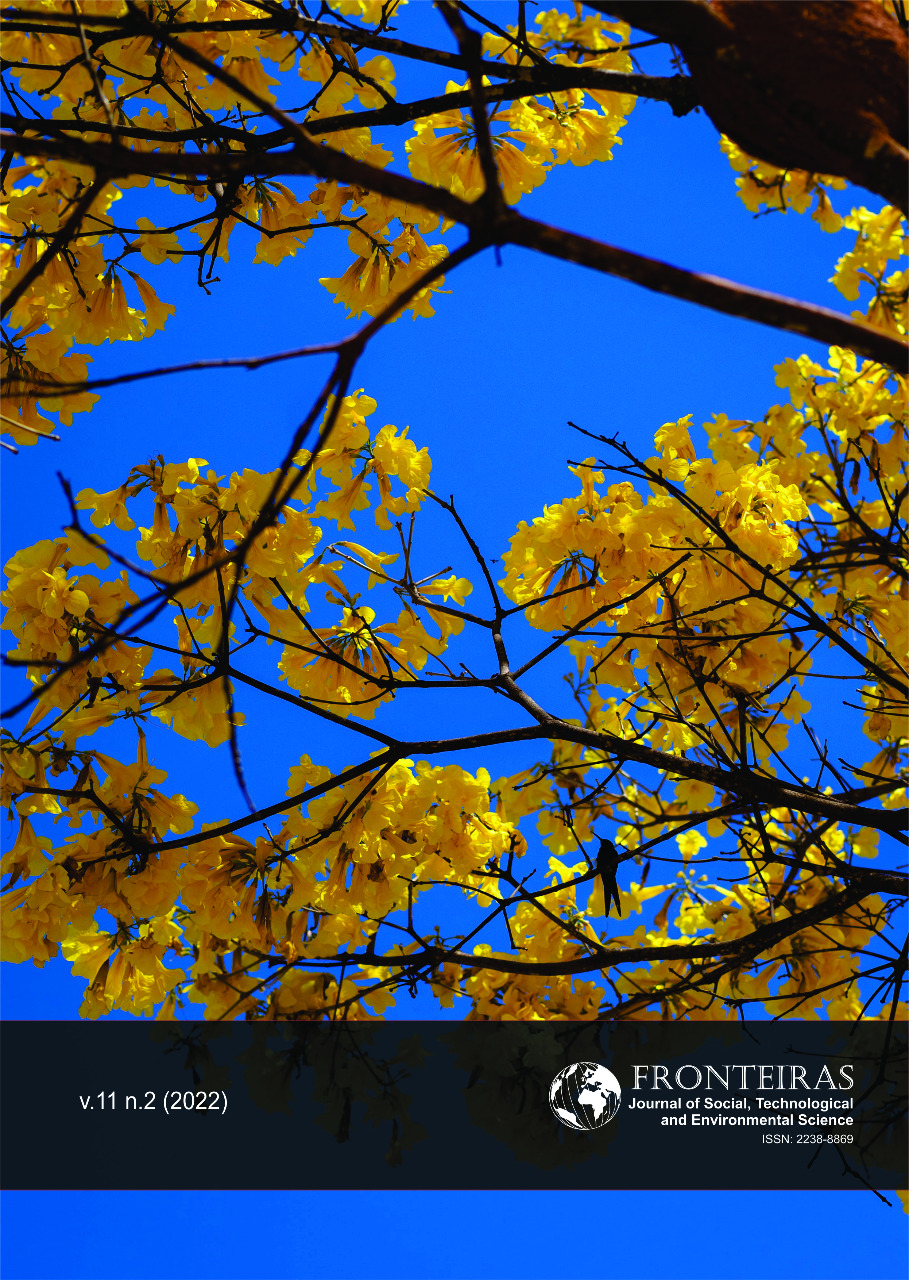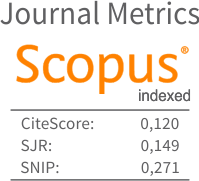Are Regulatory Standards Enough to Leverage Forest Restoration? A Brazilian Case Study
DOI:
https://doi.org/10.21664/2238-8869.2022v11i2.p96-103Palavras-chave:
política de restauração ecológica, adequação ambiental, padrões regulatóriosResumo
A compensação ambiental de áreas desmatadas ou degradadas, geralmente acontece na forma de restauração florestal. Este trabalho traz a atualização sobre as normas regulatórias (NR) em vigor sobre restauração ecológica no Brasil, analisando a existência de protocolos de monitoramento. A implantação do Cadastro Ambiental Rural (CAR), criado por lei em 2012, passou a ser o principal impulsionador do surgimento de NR no nível local. O objetivo do CAR é garantir a cobertura florestal nas propriedades rurais pela força do RS, mas falta considerar a estrutura da vegetação, a funcionalidade e a qualidade da vegetação.Atualmente, apenas quatro estados do Brasil utilizam protocolos que incluem critérios ecológicos como medida de sucesso. A existência de uma legislação específica para restauração florestal pode aumentar a eficácia da restauração, esclarecendo o processo de restauração e os regulamentos para as partes interessadas envolvidas na implementação de projetos de restauração. É necessário que as NR considerem abordagens técnicas diversas, oportunizando soluções que contemplem as possibilidades e condições locais.
Referências
Apostolopoulou E, Adams WM 2017. Biodiversity offsetting and conservation: reframing nature to save it. Oryx (51):23–31. Available from: https://doi.org/10.1017/S0030605315000782
Arvor D, Silgueiro V, Nunes GM, Nabucet J, Dias AP 2021. The 2008 map of consolidated rural areas in the Brazilian Legal Amazon state of Mato Grosso: Accuracy assessment and implications for the environmental regularization of rural properties. Land Use Policy (103): 105281. Available from: https://doi.org/10.1016/j.landusepol.2021.105281
Bonneuil C 2015. Tell me where you come from, I will tell you who you are: A genealogy of biodiversity offsetting mechanisms in historical context. Biological Conservation 192. Available from: https://doi.org/10.1016/j.biocon.2015.09.022
Brancalion PHS, Chazdon RL 2017. Beyond hectares: four principles to guide reforestation in the context of tropical forest and landscape restoration: Forest and landscape restoration principles. Restor Ecol (25): 491–496. Available from: https://doi.org/10.1111/rec.12519
Brancalion PHS, Garcia LC, Loyola R, Rodrigues RR, Pillar VD, Lewinsohn TM 2016. A critical analysis of the Native Vegetation Protection Law of Brazil (2012): updates and ongoing initiatives. Natureza & Conservação (14):1–15. Available from: https://doi.org/10.1016/j.ncon.2016.03.003
Calmon M, Brancalion PHS, Paese A, Aronson J, Castro P, Silva SC, Rodrigues RR 2011. Emerging Threats and Opportunities for Large-Scale Ecological Restoration in the Atlantic Forest of Brazil. Restoration Ecology (19):154–158. Available from: https://doi.org/10.1111/j.1526-100X.2011.00772.x
Chaves RB, Durigan G, Brancalion PHS, Aronson J 2015. On the need of legal frameworks for assessing restoration projects success: new perspectives from São Paulo state (Brazil). Restoration Ecology (23):754–759. Available from: https://doi.org/10.1111/rec.12267
Crouzeilles R, Curran M, Ferreira MS, Lindenmayer DB, Grelle CEV, Rey Benayas JM 2016. A global meta-analysis on the ecological drivers of forest restoration success. Nature Communications (7): 11666. Available from: https://doi.org/10.1038/ncomms11666
Crouzeilles R, Santiami E, Rosa M, Pugliese L, Brancalion PH, Rodrigues RR, Pinto S 2019. There is hope for achieving ambitious Atlantic Forest restoration commitments. Perspectives in Ecology and Conservation, (17): 80-83. Available from: https://doi.org/10.1016/j.pecon.2019.04.003
Drummond J, Barros‐Platiau AF 2006. Brazilian Environmental Laws and Policies, 1934–2002: A Critical Overview. Law & Policy (28): 83–108. Available from: https://doi.org/10.1111/j.1467-9930.2005.00218.x
Isernhagen I, Moraes, LFD, Engel VL 2017. The rise of the Brazilian Network for Ecological Restoration (REBRE): what Brazilian restorationists have learned from networking. Restoration Ecology (25): 172–177. Available from: https://doi.org/10.1111/rec.12480
Maron M, Hobbs RJ, Moilanen A, Matthews JW, Christie K, Gardner TA., Keith DA, Lindenmayer DB, McAlpine CA 2012. Faustian bargains? Restoration realities in the context of biodiversity offset policies. Biological Conservation (155):141–148. Available from: https://doi.org/10.1016/j.biocon.2012.06.003
Moilanen A, Teeffelen AJAV, Ben‐Haim Y, Ferrier S 2009. How Much Compensation is Enough? A Framework for Incorporating Uncertainty and Time Discounting When Calculating Offset Ratios for Impacted Habitat. Restoration Ecology (17): 470–478. Available from: https://doi.org/10.1111/j.1526-100X.2008.00382.x
Moura CJR, Barros HS, Valente FDW, Araújo VA, Bochner JK 2019. Forest Restoration in the State of Rio De Janeiro: Adherence to Legislation. Floresta e Ambiente (26):2 Available from: https://doi.org/10.1590/2179-8087.119217
Myers N., Mittermeier RA, Mittermeier CG, Fonseca GAB, Kent J 2000. Biodiversity hotspots for conservation priorities. Nature (403):853–858. Available from: https://doi.org/10.1038/35002501
Oliveira AL, Junior MGC, Barros DA, de Resende AS, Sansevero JBB, Borges LAC, de Faria S M 2020. Revisiting the concept of “fiscal modules”: implications for restoration and conservation programs in Brazil. Land Use Policy (99): 104978. Available from: https://doi.org/10.1016/j.landusepol.2020.104978
Oliveira R E, Engel V L, de Paula Loiola P, de Moraes L F D, de Souza Vismara E 2021. Top 10 indicators for evaluating restoration trajectories in the Brazilian Atlantic Forest. Ecological Indicators (127):107652. Available from: https://doi.org/10.1016/j.ecolind.2021.107652
Pacheco R, Rajão R, Van der Hoff R, Soares-Filho B 2021. Will farmers seek environmental regularization in the Amazon and how? Insights from the Rural Environmental Registry (CAR) questionnaires. Journal of Environmental Management (284): 112010. Available from: https://doi.org/10.1016/j.jenvman.2021.112010
Roitman,I, Vieira LCG, Jacobson TKB, da Cunha Bustamante MM, Marcondes, NJS, Cury K, Avila M L 2018. Rural Environmental Registry: An innovative model for land-use and environmental policies. Land use policy (76): 95-102. Available from: https://doi.org/10.1016/j.landusepol.2018.04.037
Schultz CA, Jedd T, Beam RD 2012. The Collaborative Forest Landscape Restoration Program: A History and Overview of the First Projects. Journal of Forestry (110): 381–391. Available from: https://doi.org/10.5849/jof.11-082
Scheidel A, Gingrich S 2020. Toward sustainable and just forest recovery: research gaps and potentials for knowledge integration. One Earth 3(6): 680-690. Available from: https://doi.org/10.1016/j.oneear.2020.11.005
Siqueira LP, Tedesco AM, Rodrigues RR, Chaves RB, Albuquerque NC, Corrêa FF, Brancalion PH 2021. Engaging people for large-scale forest restoration: governance lessons from the Atlantic Forest of Brazil. The Atlantic Forest: 389-402. Available from: https://link.springer.com/chapter/10.1007/978-3-030-55322-7_18
Soares-Filho B, Rajão R, Macedo M, Carneiro A, Costa W, Coe M, Alencar A 2014. Cracking Brazil's forest code. Science (344): 363-364. Available from: https://science.sciencemag.org/content/344/6182/363
SOS Mata Atlântica 2017. Atlas dos remanescentes florestais da Mata Atlântica: período 2015-2016. SOS Mata Atlântica, São Paulo-SP.
Tilman D, Isbell F, Cowles JM 2014. Biodiversity and Ecosystem Functioning. Annual Review of Ecology, Evolution, and Systematics (45):471–493. Available from: https://doi.org/10.1146/annurev-ecolsys-120213-091917
Downloads
Publicado
Como Citar
Edição
Seção
Licença
Esta revista oferece acesso livre imediato ao seu conteúdo, seguindo o princípio de que disponibilizar gratuitamente o conhecimento científico ao público proporciona maior democratização mundial do conhecimento.
A partir da publicação realizada na revista os autores possuem copyright e direitos de publicação de seus artigos sem restrições.
A Revista Fronteiras: Journal of Social, Technological and Environmental Science segue os preceitos legais da licença Creative Commons - Atribuição-NãoComercial 4.0 Internacional.


